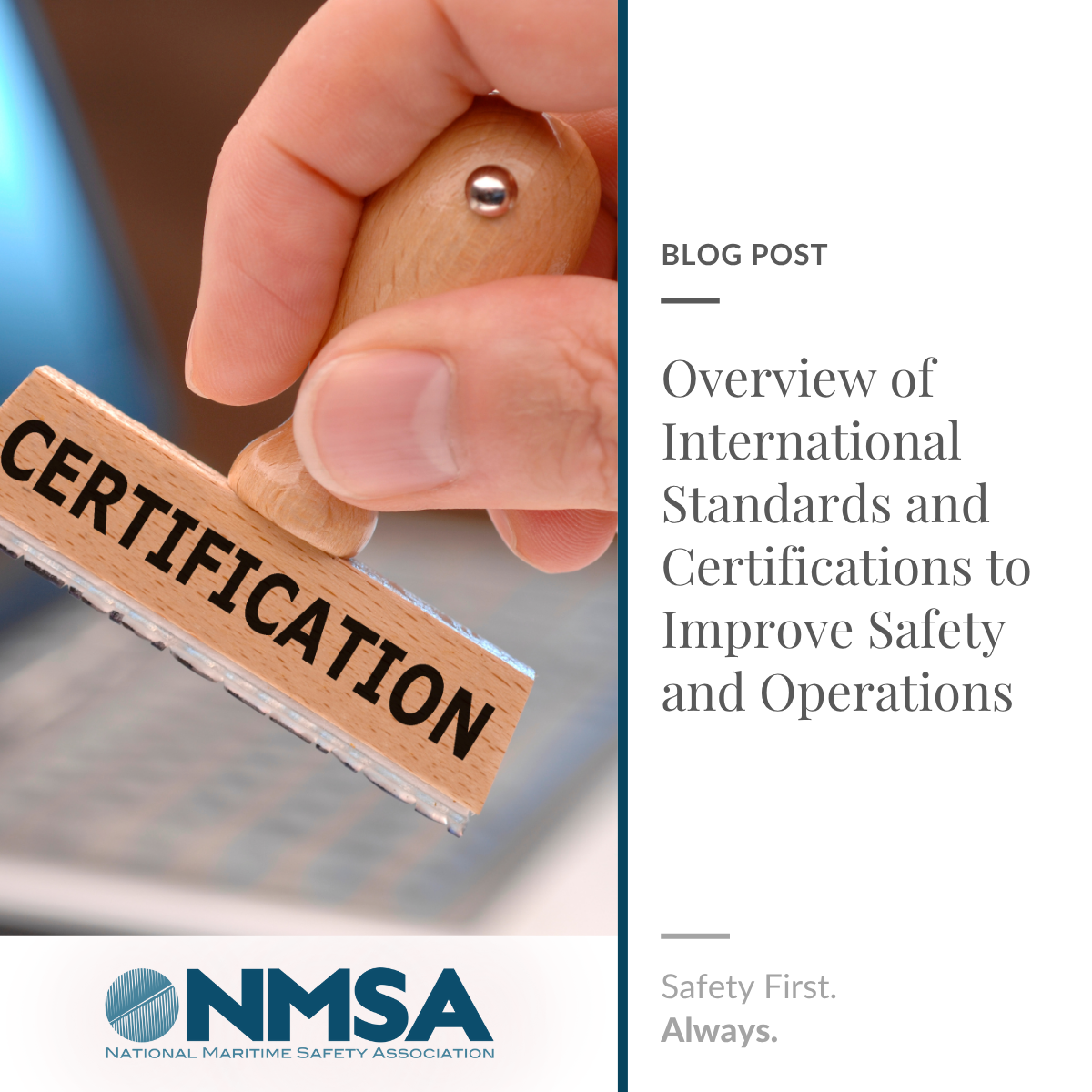Author: Erick H.-Saia, Director of Safety & Loss Control, Greenwich Terminals LLC
In the pursuit of continuous improvement there are several international standards that industries can select to incorporate into their procedures and operations. These standards help ensure that companies and their employees have defined roles and processes throughout the enterprise. Ranging from routine daily operations and incident management up to the management of change and creating new corporate processes these standards provide a concise structure that is first implemented, and then regularly audited to maintain compliance.
The most recognizable of these standards is ISO – the International Organization for Standardization (https://www.iso.org/home.html). ISO is a Standard that creates global collaboration between experts who create methods and documentation for nearly anything from managing processes to frontline product development1.
London, 1946, sixty-five Delegates from twenty-five Countries met to begin formulating International Standardization, and in 1947 ISO was created with 67 technical committees containing groups of experts focused in various subjects1. Many think that “ISO” is an acronym, but it is actually inspired by the Greek word “Isos” meaning “equal,” and is intended to communicate the Organization’s mission to create global standards1.
Moving to the maritime industry there are several ISO Standards that may be applied:
- ISO 9001: Quality Management
- A primary ISO Standard that focuses on Quality Management Systems (QMS), and is intended to improve operations optimization, reduce errors, and improve customer satisfaction.
- ISO 14001: Environmental Management
- Focuses on Environmental Management Systems (EMS), and targets waste reduction, energy conservation, and improving sustainability.
- ISO 45001: Occupational Safety & Health
- Offers a system to build or improve Occupational Health & Safety (OHS) Management Systems.
- ISO 27001: Information Security Management
- Provides requirements to establish, implement, and maintain Information Security Management Systems (ISMS). 2
Requirements for ISO Certifications include:
- Regular internal audits to ensure all processes remain ISO compliant, and addressing any non-conformities prior to the external audits.
- Continuous Employee training and awareness.
- Updated documentation for all policies, procedures and recordkeeping.
- Continually monitor and improve processes including customer feedback, risk assessments, and corrective actions.
- Management reviews to analyze audit results, customer feedback, and performance metrics.
- Track and comply with all legal and regulatory requirements as applicable.
- Maintain readiness for the required external surveillance audits. 5
ISO Certification Audits (CA) follow a 3-year cycle:
- Year 1 full audit for Stage 1 and Stage 2 CA.
- Year 2 is a Surveillance Audit inspecting part of the system.
- Year 3 another Surveillance Audit inspecting further parts of the system.
- Year 4 begins the 3-year cycle again. 6
OHSAS 18001:2007 vs. ISO 45001:2018
In a time before the creation of ISO 45001 there was a Standard entitled Occupational Health and Safety Assessment Series (OHSAS 18001) which was a system to manage workplace health and safety risks, and was published by the British Standards Institution (BSI). Although recognized around the world it did not meet ISO requirements and was eventually replaced by ISO 45001 at the end of 2018. 3
Differences between OHSAS 18001 and ISO 45001:
|
18001 |
45001 |
| Focused on procedures. | Focuses on processes. |
| Risk-based. | Includes risk assessment and opportunities. |
| Considered to be a reactive approach. | Intends to include a proactive risk-based approach. |
| Limited in applying at multiple companies regardless of size. | Able to be applied regardless of company size.
|
| Applicable to certain procedures only. | Applies to all systems and an interrelation of process. |
3
In addition to ISO 14001 – Environmental Management there is another global environmental standard that NMSA Members are embracing called Green Marine (https://green-marine.org/).
Green Marine, Managed by Green Marine International, is a non-profit organization managed by a Board of Directors, and their goals are to target and improve key environmental issues including biodiversity protection, air, water and soil quality, and community relations. 4
Their Certification Process includes:
- Annual self-evaluation for each performance indicator.
- Ports and Seaway Candidates
- Air emissions / GHG
- Aquatic ecosystems
- Community impacts and relations (separate PI’s)
- Dry bulk handling and storage
- Environmental leadership
- Spill prevention and stormwater management
- Underwater noise
- Waste management
- Ports and Seaway Candidates
- External verification every 2 years by a Green Marine accredited verifier.
- Publishing the results at Green Marine’s annual GreenTech conference.
- Demonstration of yearly improvement(s).
- Certification logo identifying successful completion of all requirements.
5
NMSA Members continue to seek out and complete the requirements of these Standards and Certifications in a constant pursuit of improvement where needed. A prior internal poll with NMSA’s Technical Committee confirmed that several Members have either completed their certification at specific Terminals, or are in the process for ISO Certifications:
- APM Terminals Pier 400 (45001 and 14001)
- SSA Marine (14001)
- Fenix Marine (pending final audit for 9001, 14001, and 45001)
- Several Signal Mutual Clients (pending)
In addition, Terminal participants with Green Marine include:
- PNCT
- Ports America
- SSA Marine
- TraPac
- Enstructure
NMSA and its Members continue to strive for excellence not only in marine cargo handling, but also as stewards and stakeholders in our industry, communities, and the environment around us.
Thank you.




